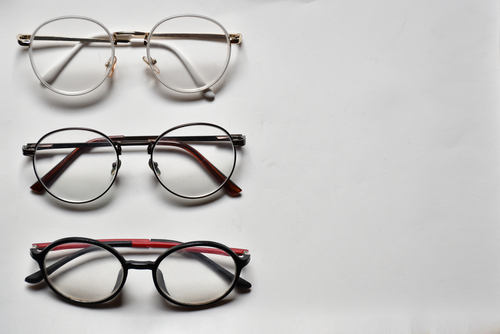
Some eyeglasses incorporate varying strengths throughout the entire lens. Examples include the popular bifocal lenses. Others include the trifocal lenses and the single-vision lenses, which usually have one power over the whole lens. So, which one should you choose? What if you need more than one of these?
For instance, you could have seen that your near vision is not as good as it once was. You might need reading glasses to read a book and remove your regular prescription glasses for other activities. Progressive lenses step in when there is much switching and figuring out what is comfortable.
What Are Progressive Lenses?
Progressive lenses become a necessity as people age. Focusing on near objects becomes difficult when you reach the ages of 35 and 40. This ocular condition that affects near vision due to age is called presbyopia. To remedy this, some people use two pairs of glasses to help them cope: single-vision glasses to get better distance vision and reading glasses for close-up work.
Progressive lenses with a smooth appearance have outdone bifocal and trifocal lenses. There are obvious lines in the lenses of these more conventional spectacle styles. Progressive lenses are sometimes called "no-line bifocals," although that is incorrect. The term "no-line trifocals" would be more appropriate to describe progressive lenses.
How Do They Work?
The upper portion of a progressive lens has the power to help with distance vision
The lower portion has the power to see near objects and do close-up work
The middle part works to help you see intermediate distances
The strengths of these lenses change gradually from top to bottom
If your child has severe myopia and hyperopia, they may require progressive lenses, but most people need them as they age.
What Are the Benefits of Progressive Lenses?
No Obtrusive Bifocal Line
Multifocal lenses come in progressive, bifocal, and trifocal versions. The latter two varieties, however, do not have the smooth gradations in strength that progressives do. Instead, their various zones are divided by obvious lines.
The distinct near-vision field, which is often a half-moon-shaped portion located at the lower region of the lens, may be seen when you gaze at a bifocal lens.
Thus, you will experience gradual shifts in clarity. This is frequent with multifocal lines, but a progressive lens gradually increases lens strength.
Only One Set of Glasses Is Required
To some people, progressive lenses are superior to single-vision glasses. The lenses enable them to see properly at different distances without carrying around an extra pair of glasses. They are right.
Progressive lenses have higher prescription strengths than single-vision lenses. Yet they look like regular glasses at a glance. You only need one pair of glasses since progressive lenses replace both your single-vision and reading glasses.
Stylish and Young Appearance
Most people associate trifocal and bifocal lenses with the older generation. It makes it a self-esteem issue when a young person must wear bifocals. It is not the case with progressive lenses because these do not have an obvious line separating the different regions of the lens.
For more on progressive lenses, visit My Vision at our office in Center Valley, Pennsylvania. Call (484) 265-9100 to book an appointment today.








